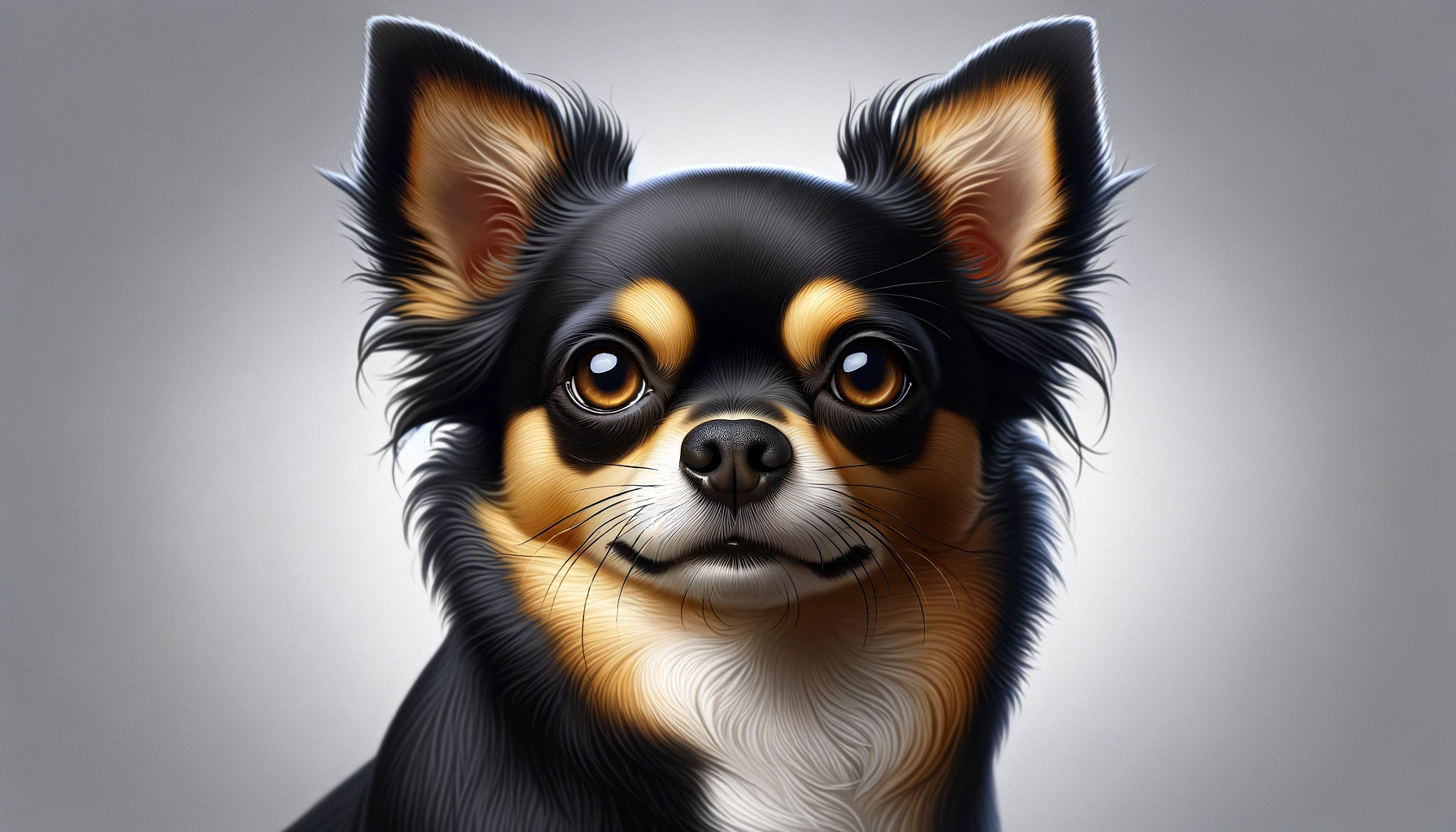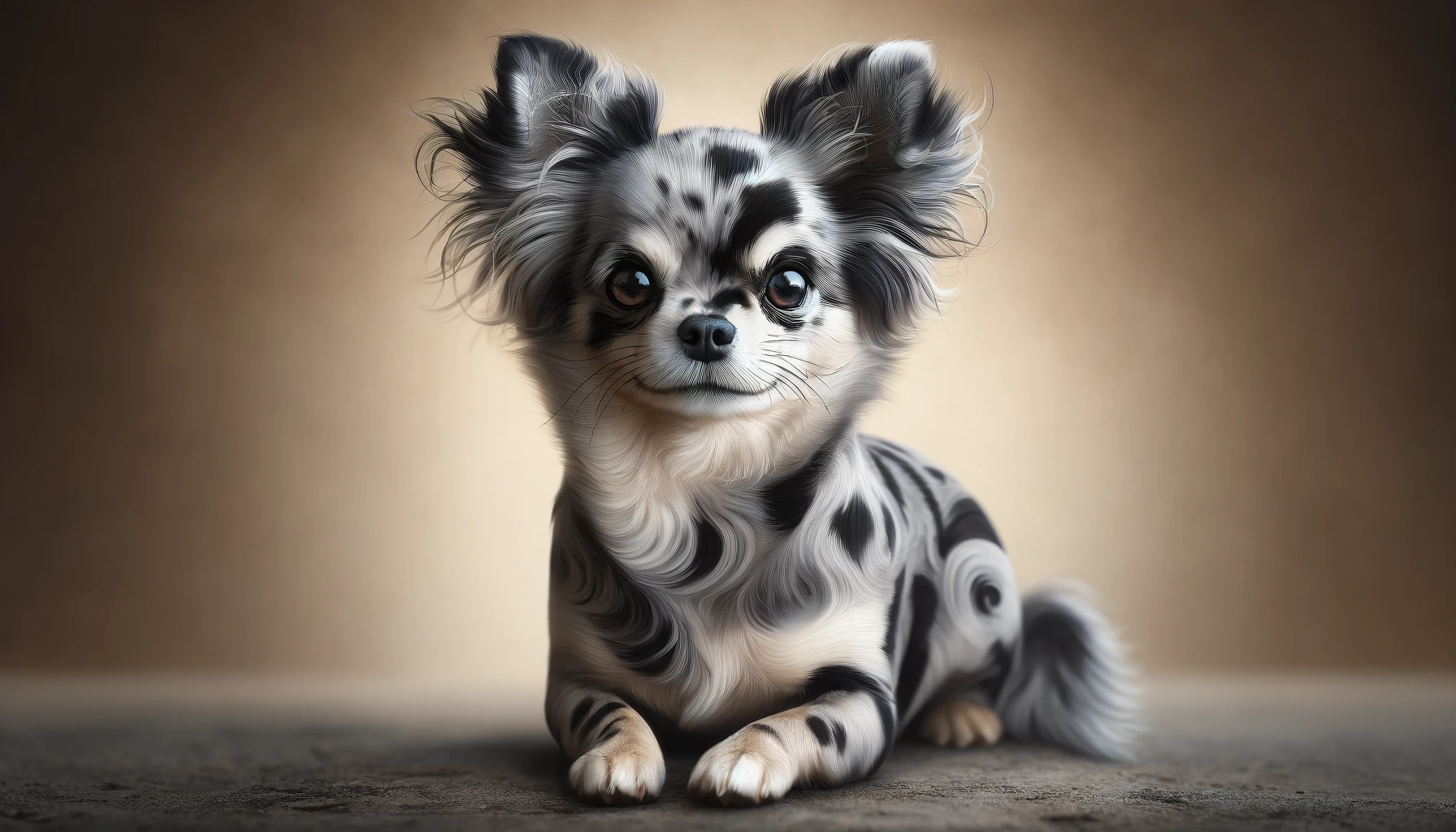Chihuahuas are one of the smallest dog breeds, but they pack a variety of colors and markings that rival any other breed in diversity. These pint-sized pups have won the hearts of many with their big personalities and even bigger wardrobes of color variations. From vibrant and distinct to subtle and soft, the palette of Chihuahua colors is extensive and fascinating, reflecting their unique genetics and the extensive breeding practices that have made these colors so varied. This article explores seven stunning color variations of Chihuahuas, each bringing its charm and set of characteristics that can help prospective owners and enthusiasts understand more about this vibrant breed. These colors not only enhance the aesthetic appeal of Chihuahuas but also often influence their popularity and desirability in different regions and cultures.
1. Fawn

One of the most common and beloved colors in Chihuahuas is fawn. This warm, deer-like color can range from a soft, creamy tan to a deeper, reddish hue. The fawn Chihuahua carries a kind of timeless beauty, with a coat that shines brilliantly in the sunlight. These dogs often have dark expressive eyes that provide a striking contrast to their light fur, making them particularly photogenic. Owners of fawn Chihuahuas might find that their pets are often mistaken for little deer, especially when they prance or play in grassy areas. The color is also favored for its visibility; a fawn Chihuahua rarely goes unnoticed in a crowd, making them the center of attention and often, much adored.
2. Black and Tan

Black and tan Chihuahuas are marked similarly to Dobermans or Rottweilers, with a primarily black coat and tan markings above the eyes, on the cheeks, chest, legs, and under the tail. This striking combination gives them a bold, assertive look that belies their small size. These Chihuahuas are often depicted as the ‘tough little dogs’ in various media, which adds to their appeal. The tan markings can vary in intensity and cover more or less area, but they always provide a stunning contrast to the black. Owners of black and tan Chihuahuas might note that their pets have a regal bearing, often standing out in canine crowds with their distinctive, sharp appearance.
3. Chocolate

Chocolate Chihuahuas possess a rich, deep brown color that can range from a light milky brown to an almost dark coffee shade. This color is quite rare and sought after because of its depth and unusual appearance in the canine world. Chocolate Chihuahuas often have brown or hazel eyes that blend seamlessly with their coat, giving them a monochromatic elegance. This color variation can also appear in different textures, from smooth to long-haired, each adding a dimension of luxury to the appearance of the chocolate Chihuahua. Owners often report that these dogs have a sweet, endearing nature that matches their delightful exterior.
4. Blue

Despite its name, the blue Chihuahua is a type of dilute black color that appears as a soft, steely gray. This rare and visually captivating color results from a genetic dilution of the black pigment. The blue Chihuahua’s coat can vary from silver-gray to darker charcoal, often with a shimmering, metallic sheen that is especially visible under sunlight. These dogs can be solid blue or may have white or tan markings. The rarity of the color makes blue Chihuahuas highly prized and often subjects of breeding attention, which demands caution to avoid health issues commonly associated with color dilution genes.
5. Cream

Cream Chihuahuas exhibit a soft, pale yellow coat that may almost seem white under certain lighting. This color in Chihuahuas is particularly striking due to the contrast it often forms with their dark eyes and noses. The cream is softer than fawn and lacks the reddish undertone, giving these dogs a more subdued but equally elegant appearance. Cream Chihuahuas can have short or long coats, and both types benefit aesthetically from the gentle, almost pastel shade. Owners of cream Chihuahuas often find that their pets have a calm demeanor, which perfectly complements their delicate appearance.
6. Merle

The Merle Chihuahua is one of the most striking due to the unique patterns of darker patches and swirls over a lighter base color, which can be any of the aforementioned colors. This genetic trait creates a marbled or mottled effect, often accompanied by blue or odd-colored eyes, adding to their mystical appearance. However, the Merle gene can bring with it several health issues, including deafness and blindness, so careful breeding practices are essential. Despite these concerns, the beauty of Merle Chihuahuas is undeniable, and they continue to captivate with their fairy-tale-like coats.
7. White

Pure white Chihuahuas are a spectacle in simplicity with their snow-white coats that lack any markings. This stark white color makes them stand out, especially with the contrasting dark eyes and noses that most white Chihuahuas have. Their ghostly beauty is matched by few, and in the sunlight, their fur can appear almost luminous. White Chihuahuas require regular grooming to maintain the pristine appearance of their coats, which can attract visible dirt easily. They are often the epitome of the breed’s charm, embodying purity and an almost porcelain doll-like aesthetic.
In summary, the Chihuahua breed offers a spectacular array of colors that not only add to the aesthetic diversity of the breed but also enhance the individuality of each dog. Whether you prefer the soft hues of cream and fawn the striking contrasts of black and tan, or the rare and captivating shades like blue and chocolate, Chihuahuas offer something for every taste. Their coloration is just one of the many reasons these dogs are cherished as companions around the world, each color bringing with it a unique set of characteristics and charms.
Frequently Asked Questions About Chihuahua Colors
1. What are the standard colors for Chihuahuas?
Chihuahuas are one of the breeds with the most color variations, ranging from solid to mixed patterns. The standard colors include fawn, chocolate, black, white, and cream. These colors can appear either solid or can be mixed with other colors in various patterns such as tricolor, merle, or spotted. The fawn color, a light tan, is particularly common and widely recognized as a classic Chihuahua color. These colors are determined by genetics, with certain color genes being dominant over others, which explains why some colors appear more frequently.
2. Are there any rare colors for Chihuahuas?
Yes, some Chihuahua colors are considered rare and include colors like blue, lavender, and silver. These colors are produced by specific genetic combinations that dilute the standard colors. For example, the blue Chihuahua has a gene that dilutes the black pigment, resulting in a soft gray hue. Similarly, lavender, which is a dilution of the chocolate color, and silver, often seen as a diluted black, are rare. These colors are not unique but also highly sought after by enthusiasts and breeders.
3. Can a Chihuahua’s coat color change as it grows older?
Chihuahua puppies can experience a change in coat color as they mature. This is especially true for lighter-colored Chihuahuas, such as those that are fawn or cream. As the puppy grows, its coat can darken, or lighten, or its pattern can become more pronounced. This change usually stabilizes by the time they reach 12 months of age. Potential owners need to be aware that the color of a Chihuahua puppy might not be the same when it becomes an adult.
4. Does coat color affect the health of a Chihuahua?
Generally, a Chihuahua’s coat color does not directly impact its overall health. However, certain colors associated with genetic mutations, such as merle, can carry health risks. The merle color pattern can be linked to genetic disorders such as deafness and blindness if not bred responsibly. Therefore, when choosing a Chihuahua, it is important to consider health screenings and the reputation of the breeder over the coat color.
5. How do I maintain the vibrant color of my Chihuahua’s coat?
Maintaining the vibrant color of your Chihuahua’s coat involves regular grooming and proper nutrition. Bathing your Chihuahua with a high-quality dog shampoo can help remove dirt and debris that dull the coat. Additionally, feed your Chihuahua a balanced diet rich in omega fatty acids, which nourish the skin and coat. Protecting your Chihuahua from excessive sun exposure is also crucial, as too much sunlight can fade the coat colors over time.
6. What is the most popular Chihuahua color?
The most popular Chihuahua color is fawn. This warm, sandy color is often associated with the breed and is favored for its classic look. Fawn Chihuahuas are prevalent in both media representations and in breeding preferences. The popularity of this color can be attributed to its visibility in contrast with the Chihuahua’s expressive features, making them highly photogenic and appealing to a wide audience.
7. Are Chihuahuas with multicolored coats more expensive?
Chihuahuas with multicolored coats, such as those with the merle pattern, can sometimes be more expensive due to their unique appearance and rarity. However, the price can vary widely depending on other factors such as lineage, health, and the breeder’s reputation. While coat color can influence price, potential owners should prioritize health and temperament over color when selecting a puppy.
8. Can Chihuahuas be all white?
Yes, Chihuahuas can be all white. This coat color results from genes that suppress all other color pigments. While striking, all-white Chihuahuas can sometimes face specific health issues such as increased susceptibility to sunburn and skin cancer, as well as the potential for deafness, particularly if they have blue eyes. Owners of white Chihuahuas need to take extra care with their sun exposure and health monitoring.
9. What determines a Chihuahua’s coat color?
A Chihuahua’s coat color is determined by its genetics. The genes inherited from both parents influence the distribution of melanin in the coat, leading to the variety of colors seen in the breed. Some genes result in solid colors, while others create patterns. Additionally, some genes can dilute these colors, leading to rarer and lighter shades. Breeders can use genetic testing to predict the possible colors of puppies in a litter.
10. How does grooming affect a Chihuahua’s coat color?
Regular grooming can greatly affect a Chihuahua’s coat color, enhancing its vibrancy and health. Grooming removes dirt and debris that can matte the fur and make the color appear dull. Brushing helps distribute natural oils throughout the coat, adding shine and protecting against environmental damage. For Chihuahuas with lighter or rarer colors, using shampoos formulated to enhance their specific coat color can also help maintain their richness and prevent fading.
 Toledo, United States.
Toledo, United States.